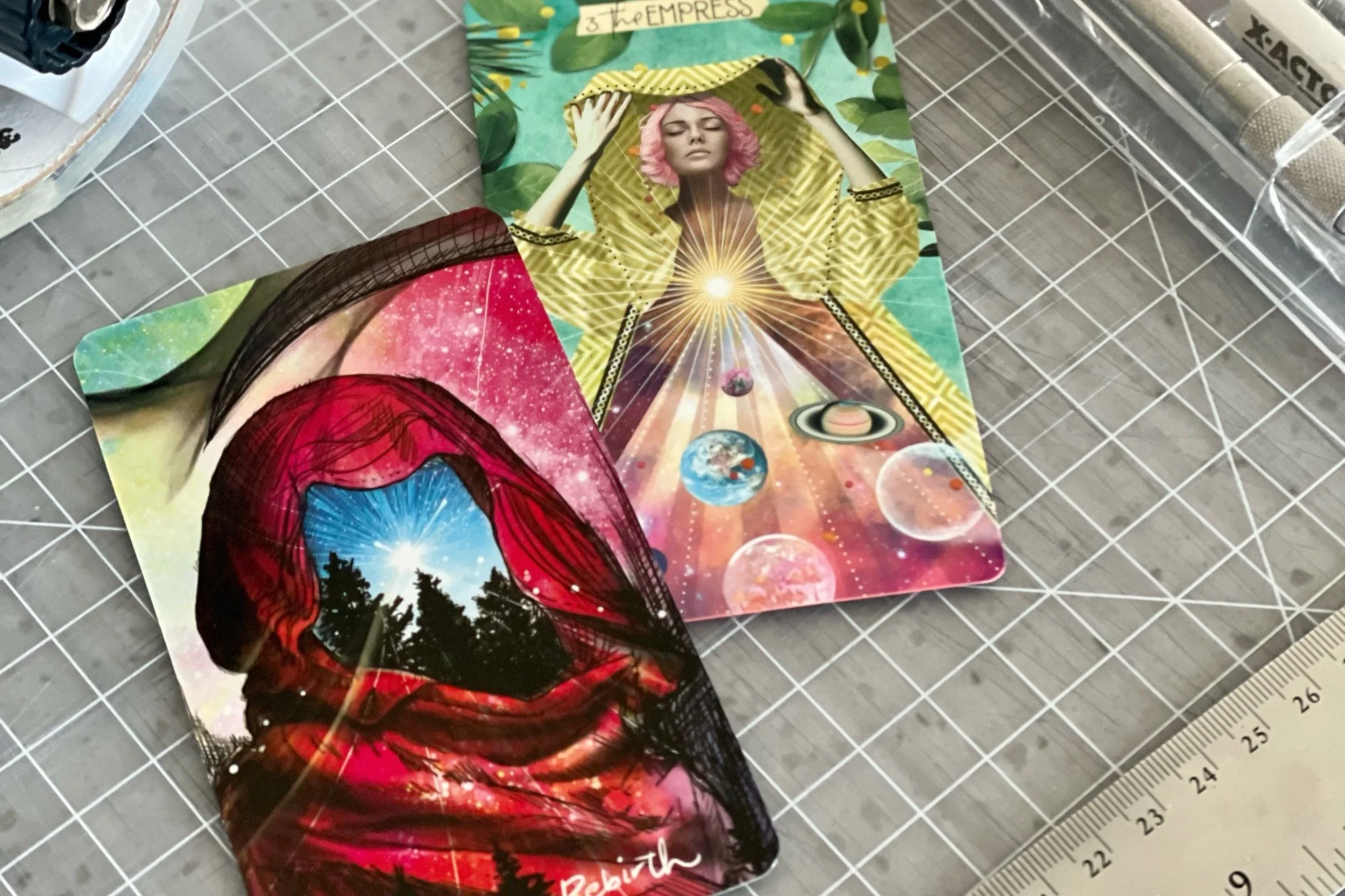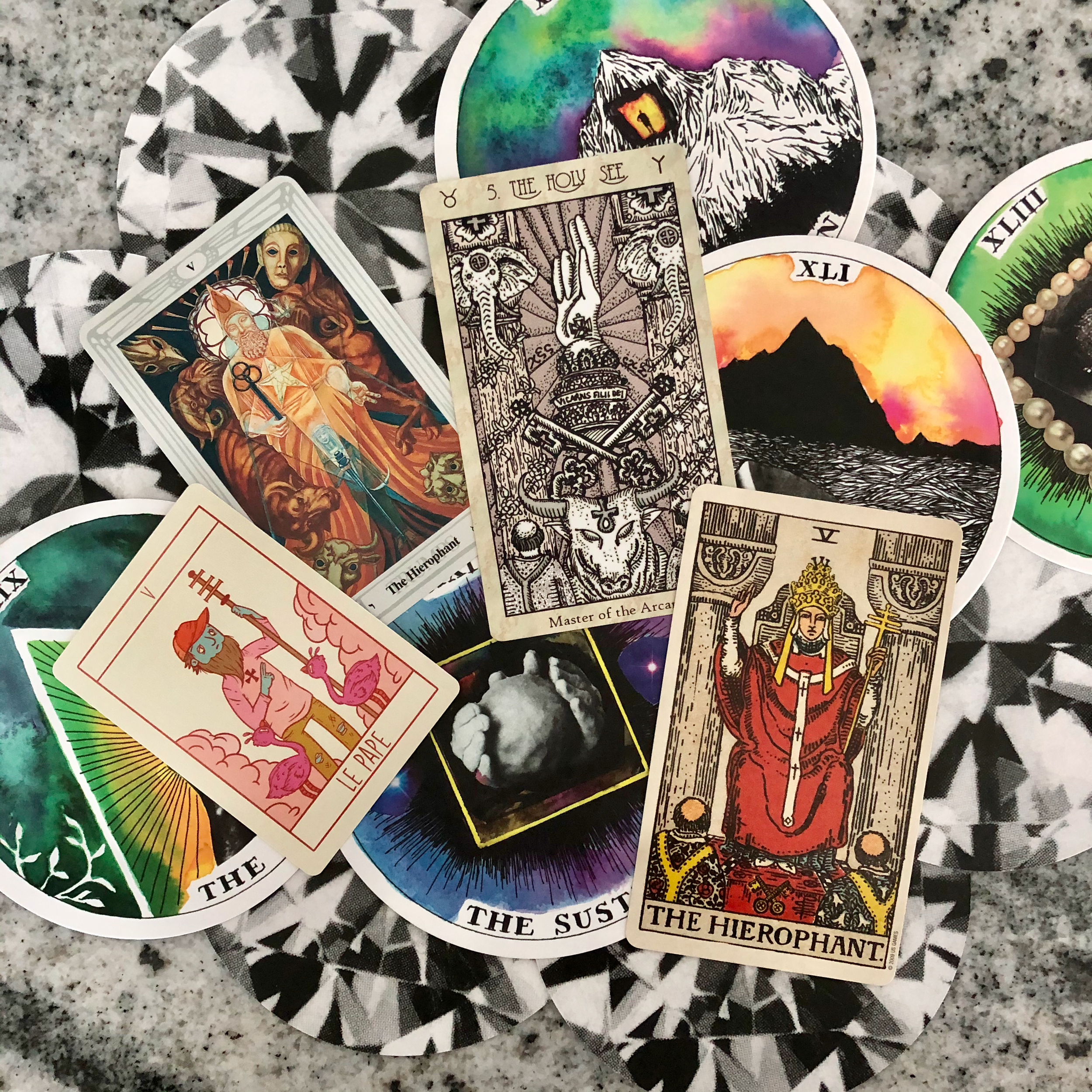When I Was So Desperate for Change I Only Saw One Side of the Cards
Stories of Tarot Transformation, Part 1
As we wind down the month of Tarot Overload—a powerful challenge according to those who have done it (and me)—I wanted to return to this idea of analysis paralysis that inspired the challenge in the first place and how you can use tarot to transform your life for the better.
When using tarot for guidance, it’s important to know what generally is in alignment for you (through deep self-reflection and your innate archetypes) and what opportunities and obstacles are in alignment with your current trajectory (through forecasting). That might sound obvious and vague, but it has very real consequences and very real practical applications. Often, good readers feel weighed down (and let down) by their divinations at a time when they feel they most need them.
That’s usually because they are out of alignment and desperate for change. But they don’t know where to start and what’s available to them in making that change.
Since I’m offering a three-month small-group coaching program around devoted to this, I won’t pretend I can cram everything you need into a blog post. But I want to give some examples from my own life of how desperation and alignment affect the way we read the cards and live our lives, even when the cards are “right.” (The cards are always right, don’t you find? It’s the reader who gets it wrong sometimes.) I’m opening up here, so I hope it helps you recognize something important to yourself.
First up is a story of desperation that I posted a few months ago. What follows is almost word-for-word the same as the previous post, but if you missed that (or have forgotten it), it’s here for your convenience. I’ll be posting two other stories over the next week.
When I Was So Desperate for Change I Only Saw One Side of the Cards
Who knew the Hierophant could be such a savage?
The first time tarot changed my life was more than ten years into my tarot reading journey. I’d been a fair-weather tarot reader from the age of 14, and at almost 27, I was desperate for guidance. I didn’t think I could trust my rational self, but I trusted in the subconscious wisdom that tarot would call up out of me.
Now, another 13 years later, I believe strongly that you should never read tarot when you’re desperate for its answers. When you feel there’s nowhere else to turn, you’re not in a good place to let the cards empower you. It’s too easy to believe in its answers as if they come from some Universal Truth outside of yourself and release agency. It’s too easy to miss all the juicy self-reflection that the tarot allows. It’s too easy to miss where tarot really shines: tarot can show you what you fear, your shadows. But it’s easy to skim right over that—to see only side of the cards—especially when you’re too desperate to see the light of clarity.
What does that have to do with transformation? Let’s just say that transformation doesn’t always happen the way you expect or even want. And had I known about Saturn Returns (or shadow work), I might have timed things a little differently.
For me, my desperation came from my uncertainty about graduate school and whether I should enroll in the PhD program that had accepted me. I loved being a student (I still do!), but I wanted to know how it would turn out when the stakes were so much higher. And there was a lot of baggage for me in being in this position of uncertainty.
Want to know the baggage?
I came from a university where almost everyone was academically excellent, and most of my friends went on to graduate school of one kind or another. What else would you do with all that brain power if not go to graduate school?
I assumed that I would too until my senior year, when I struggled to focus in on my senior honors’ thesis. I ultimately failed to complete it, and that haunted me. (Fun fact: it was about diverse sexuality in Wicca and Neo-pagan communities. So that’s a full-circle throwback.) I’d always been someone who wanted to be in school, who wanted to learn forever. My family, half of whom are Dutch, suggested that I move to Holland, where lifelong student seemed a realistic occupation. Graduate school seemed like the right next step for me, even if I couldn’t articulate why.
I’d applied to programs in the past, one time to PhD programs in marketing after working as a part-time research assistant for a marketing professor who gladly recommended me, and another time to PhD programs in anthropology (my undergrad focus) and media studies (my then-current interest). But they never resulted in my admission. Honestly, they were really terrible applications. I didn’t have the knowledge (and I didn’t seek out the guidance) to write a compelling statement of intent or create a quality writing sample or even know how to find the right programs. (I wish I had thought to find a Hermit to guide me.)
But the third time was the charm. I’d been working in Student Affairs for several years, and I knew that I wanted to become a Dean of Academic Affairs. It was a position with broad-ranging intellectual authority and a role where I could affect students’ lives for the better without having to be involved in their weekend and nighttime lives, as in Student Affairs. And I wouldn’t have to teach classes (or try to survive on a teacher’s salary). But it required a PhD in something. So while completing a Masters program, I worked with my professors to write a great statement of intent about why I needed to complete a PhD program: to be a professor, of course—aspiring to anything else, especially an administrator, would not get me into any Humanities program. I even had a writing sample based on an essay that was going to be published in a premiere peer-reviewed journal. I felt all set.
Naturally with all that, I was accepted into a PhD program, a pretty good one. And it came with a special fellowship that meant that my tuition was covered and I had a salary above the poverty line with no work (outside of coursework) for two years and then the usual teaching assistantship for another three. The school was not where I really wanted to be—I hadn’t even planned to apply until a professor recommended it—but it was the program that I got into. It was the only one. It was either go there or stop trying.
I know that took a lot of set-up. But do you see where the desperation comes in?
So there I was, unsure of whether I should take this potentially great opportunity, which felt wrong for some reason, or just change career paths (again). I turned to the tarot. I laid out a Celtic Cross with the good old Rider-Waite Tarot, a garish, oversized edition that always made me think of the phone in my mom’s bedroom with its buttons sized for geriatric fingers. (She’s not geriatric or visually impaired. It’s just the phone she bought for herself. It was probably heavily discounted. My mom knows how to shop a deal.)
I don’t remember all of the details of the spread, but I know that the final card—the outcome—was the Hierophant. I hated the Hierophant because of its papal dressings, but I knew what it represented beyond the Church. And, honestly, what more could I have wanted if my goal was higher education administration?
Reality check: I could’ve wanted happiness or satisfying relationships or leadership or, at the very least, the completion of my degree.
You see, the Hierophant is a teacher and an administrator, but he’s also a guarded old man devoted to his profession without a happy family life. And I knew that because that’s what I feared. When I looked at a mirror in moonlight some nights, I would see an unhealthy old man by himself. But I didn’t want to see that in the Hierophant. I was focused on my statement of intent. I was looking for permission from outside of myself to go after the goal I had set for myself. I wasn’t reading the cards. I was searching for the trace evidence that supported my thesis.
And the cards were right.
The cards somehow always are, even if we don’t read them accurately. On reflection, it’s often clear what they were saying and what we weren’t hearing. That’s why it’s always good to record your readings and come back to them later to see what you missed so that you don’t miss it next time.
The Hierophant was who I became in the five years I spent in my PhD program. I didn’t become a professor or a dean, and I didn’t even finish the program so that I could wield the letters of expertise (PhD) as proof of my authority. But I became the bitter old man carrying on another bitter old man’s legacy. By the end of my time in the program, I’d forgotten why I was even there. I’d bought into the lie I told the admissions committee: I believed that I wanted to be a professor because I had to believe it in order to get through the program, and I needed to keep my advisor’s attention.
Sure, I’d become disillusioned by some of the deans at my own university, but that wasn’t even on my mind. I was very wrapped up in the system that creates more of its legacy, and that’s both the strength and the weakness of the Hierophant. That outcome card—the final card of the Celtic Cross—was more predictively accurate than I could have possibly understood at that point because I didn’t really understand the cards or how they would show me both my desires and my fears. I wasn’t open to seeing their full complexity. I didn’t know how they could help me read myself.
And I certainly didn’t understand how predictions and transformative coaching could work hand in hand. But I sure do now. I may have misused tarot then to plan my future, but it taught me important lessons on the power of tarot and the fullness of its wisdom. And hey! A lot of people think I’m a great teacher after all, so that part still panned out.
Curious about how to use tarot to transform your life? Consider my small-group coaching program, Tarot to Transform Your Life. It is full of practical guidance on finding spiritual alignment in real life.


